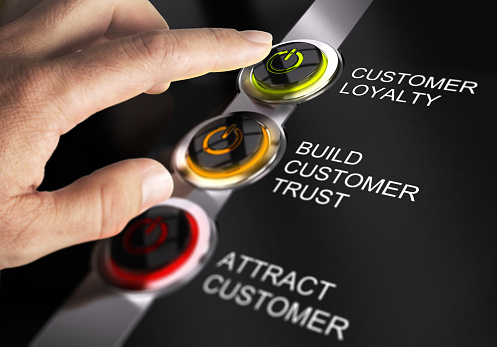 Blog Update
Blog Update
Post to Blog

Make Customer Loyalty a Bigger Part of Your
Marketing Efforts
In the early days of your business, the goal of your marketing
program was essentially a singular one: you tried to get your
product or service in front of as many eyes as you possibly could. Once
you've established yourself, however, it's time to switch gears a little. According to most studies, it's between five
and twenty-five times more expensive to gain a new customer than it is to
keep one of your existing ones. This means that if you're not already making
customer loyalty a significant part of your marketing efforts, it's about time
to get going on it.
What a Difference
Customer Loyalty Makes
According to a study conducted in 2014, seventy-three
percent of consumers said that loyalty programs should be the way that brands show
loyalty to their existing customers. Regardless of which way you choose to look
at it, even instituting a modest customer loyalty program can have significant
benefits across your entire organization. It can help make your marketing more
appealing to new customers, as well as lead to higher levels of engagement
with existing ones. That engagement breeds retention, which research suggests creates a situation
where your average customer will be up to five times more likely to only buy from you in the
future.
Also, remember that increasing customer retention (which these
types of loyalty programs are great at doing) by just five percent can
boost your profits anywhere from twenty-five to ninety-five
percent, according to Bain & Co. Let that sink in
for a second.
Building a Customer
Loyalty Program
When you begin to institute a customer loyalty program for your
business, the biggest mistake you should avoid is one of perspective. Remember
that what you're trying to do is show loyalty to your customers, period. Far
too many businesses make the mistake of assuming that this is a way for customers to show
loyalty to a brand,
which leads to the type of ill-advised thinking that generates bad customer
service and only ends up with a program few people want to take advantage
of.
Assuming that you're "giving your customer the
opportunity" to show loyalty to your business is how you end up in a
situation where forty-three percent of consumers say that
rewards programs require too much spending to reach the next level, or where
points expire before they can be used, or where points are worthless because of
all the restrictions they come with. Build a program that lets you say an
emotional "thank you" to the people who got you where you are, NOT
the other way around.
If you are going to make customer loyalty a bigger part of your
marketing efforts, however, always remember the old saying that "variety
is the spice of life." In a survey conducted by Collinson Latitude,
sixty-three percent of respondents said that having a wide range of
rewards and offers was the single most important aspect that decided whether or
not they would sign up for a loyalty program. So the occasional coupon isn't
necessarily going to cut it (pun absolutely intended).
Again, making customer loyalty a bigger part of your marketing
efforts is, and will always be, about giving back to the people who helped
build your brand. If you make every decision with this one simple perspective
in mind, all of the other benefits - from increasing the value of each customer
to engagement and long-term loyalty - will happen as a happy byproduct.
No comments:
Post a Comment